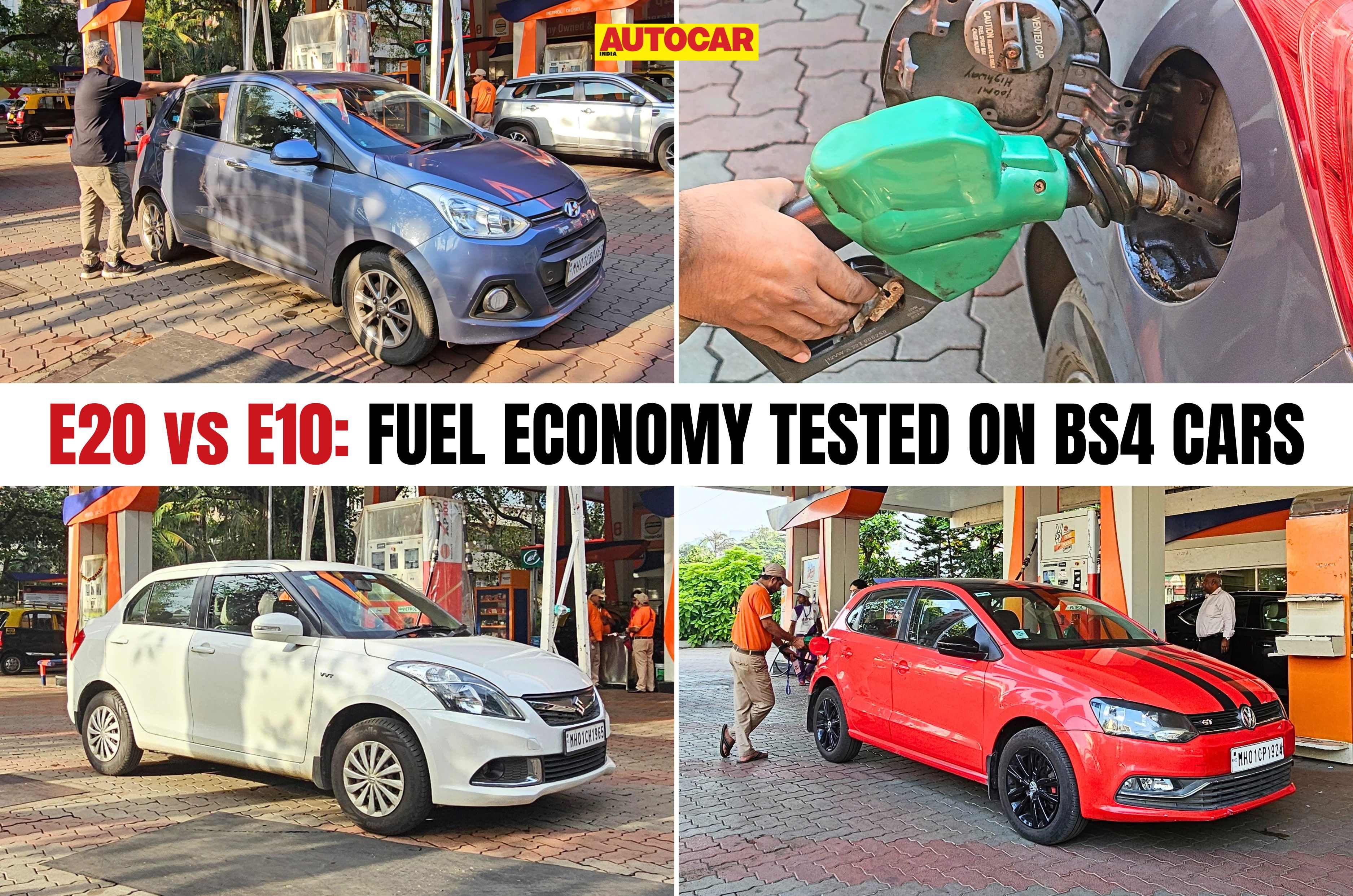
When Autocar India tested E20-compliant cars earlier this year, many readers wanted to know how older, non-compliant cars would perform on the same fuel. Most cars produced before April 2023 were designed for E10 or lower ethanol content. While they will still run on E20 petrol without immediate issues, there are legitimate concerns about long-term wear on seals, hoses and injectors – and more immediately, a drop in fuel economy.
To quantify this loss, Autocar India conducted another round of real-world testing with three popular BS4-era petrol cars: a 2016 Maruti Suzuki Dzire (K12, 4AT), a 2016 Hyundai Grand i10 (Kappa 1.2, 5MT) and a 2017 Volkswagen Polo GT TSI (1.2 TSI, 7DSG). These cars represent both naturally aspirated and turbocharged engines common in India’s pre-E20 fleet.
Test methodology
The procedure mirrored that of our earlier E20-compliant test. All cars were filled with E20 petrol, tyre pressures set to manufacturer recommendations, climate control fixed at 22deg C, and drive modes in Eco where available. Each vehicle was driven on the same 230km South Mumbai loop over a 12-hour period, averaging 18-20kph in mixed city conditions. Drivers swapped halfway through to eliminate individual variations in driving style.
Because E10 petrol has been phased out, we recreated it using a 50:50 blend of E20 and XP100 (ethanol-free 100-octane petrol). This effectively reduced the ethanol concentration to around E10. However, this recreated blend had a much higher octane rating – roughly 98-99 RON compared to the 91 RON of the original retail E10. The higher octane improves knock resistance and can deliver small efficiency gains, so the recreated E10 likely gave slightly optimistic results. The actual efficiency gap between E10 and E20 in real-world use would, therefore, be smaller than what our numbers show.
| E20 vs E10 mileage test results | ||||
|---|---|---|---|---|
| Car | Avg. speed (kph) | FE on E20 (kpl) | FE on E10 (kpl) | variance (%) |
| Hyundai Grand i10 | 19.3 | 11.49 | 12.65 | -9.17 |
| Maruti Suzuki Dzire | 19.3 | 9.8 | 11.19 | -12.42 |
| Volkswagen Polo GT TSI | 18.0 | 9.13 | 9.63 | -5.19 |
The Dzire suffered the biggest drop in economy – 12.4 percent – largely due to its non-optimised calibration and the drag from its old 4-speed torque converter. The Grand i10 followed with a 9.2 percent fall, while the Polo GT TSI saw the smallest reduction, just 5.2 percent on E20.
All cars were sourced from known owners, well-maintained, and with no known mechanical faults, ensuring consistent baselines.
Why efficiency drops vary
Ethanol contains around 30 percent less energy per litre than petrol, so some reduction in mileage is inevitable. However, ethanol also raises the octane rating, which improves knock resistance and allows some engines to partially recover the loss through more advanced ignition timing or higher compression ratios.
That’s why the Polo GT’s 1.2 TSI engine fared best. Its turbocharged, direct-injection setup runs at higher cylinder pressures and can automatically adjust ignition timing to take advantage of the higher octane rating of E20. This keeps combustion closer to optimal, mitigating the drop in efficiency.
The naturally aspirated K12 and Kappa engines in the Dzire and Grand i10, on the other hand, lack such adaptability. Their ignition maps and fuelling are tuned for lower ethanol blends and lower compression operation. As a result, they suffer greater losses in thermal efficiency when burning E20. The Dzire’s 4-speed automatic further compounds losses due to higher torque-converter slippage.
Also, since our E10 substitute had a much higher octane than the original E10 fuel sold earlier in India, it likely inflated the apparent difference between E10 and E20 results. In real-world conditions with genuine 91-octane E10, the gap would be narrower, though still significant.
Interestingly, when we previously tested the newer E20-compliant Dzire equipped with the high-compression Z-series engine, the drop was only 3.84 percent. The newer engine’s 13.0:1 compression ratio and recalibrated ECU mapping allow it to exploit the higher octane content of ethanol-blended fuels more effectively.
The results confirm that older BS4 and early BS6 cars can experience up to a 10-12 percent drop in fuel efficiency when running on E20 petrol. While manufacturers like Maruti Suzuki are expected to offer E20 upgrade kits to make older vehicles materially compatible – preventing rubber and plastic degradation – these kits will not address the efficiency deficit. Without ECU recalibration to optimise combustion for E20’s characteristics, higher fuel consumption is unavoidable.
As India transitions fully to E20, owners of older vehicles should expect a noticeable increase in running costs, especially since the government has unfortunately not reduced the price of petrol with the introduction of E20.
Also see:
Deep Drive Podcast: the truth behind the switch to E20 ethanol fuel
MG Windsor vs Tata Nexon EV real world range comparison
Maruti Victoris CBG variant to debut at Japan Mobility Show 2025

